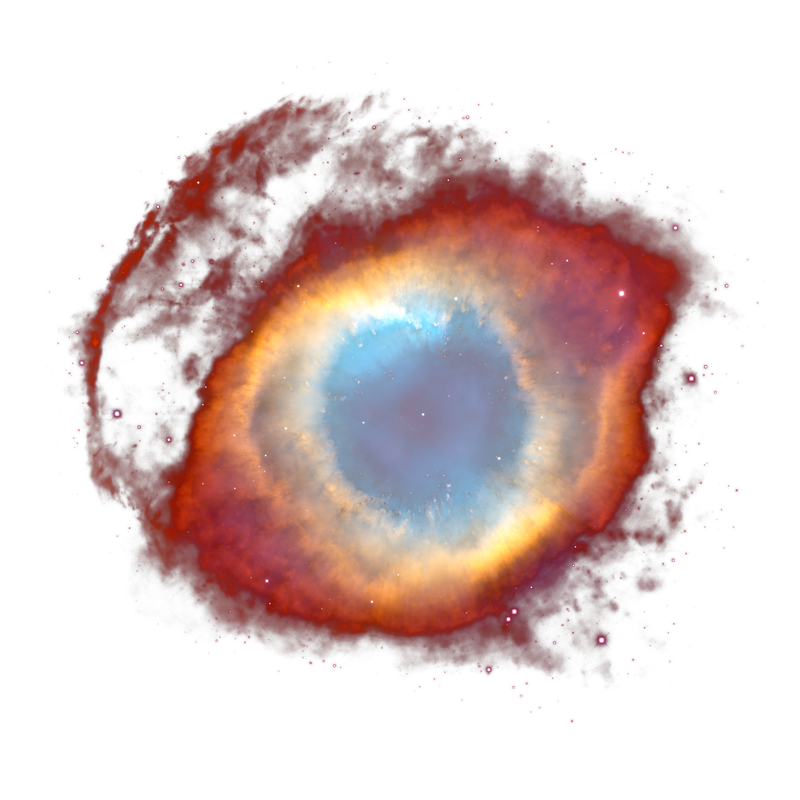We should send Earth‘s prominent scientific mind Elon Musk to make sense of the mind-blowing discoveries beyond the event horizon.
The proposal here is very similar to the Breakthrough Starshot initiative that wants to send a probe to Alpha Centauri, the nearest star system to our sun.
Basically the idea is to take a very small (i.e. low mass) craft with a large solar sail and accelerate it to a significant fraction of the speed of light using very powerful ground-based microwave laser arrays. The neat thing about this concept is that all of the technology essentially exists already — it’s just a matter of scaling up existing concepts and miniaturizing existing sensors.
The black hole rendezvous suggested in this paper is a lot more ambitious than Starshot, targeting a distance of 20-40 light-years (for comparison Alpha Centauri is only about 4 light-years away) and a max speed of 30% the speed of light (vs a speed of ~10% c targeted by Starshot). I think the main problem here (other than the requirement of building what essentially amounts to a microwave death ray) would be developing an antenna that’s both small enough to fit under the strict mass limits and powerful enough to broadcast the data 20+ light-years back to Earth. Maybe space-time lensing effects around the black hole itself could be used to amplify the signal? Another problem is that even at extreme speeds, this is a multi-decade mission — like 70+ years. Considering the travel delay involved in sending back a signal, it’ll be a century at least before any data would arrive at Earth. Unfortunately, century-long projects are an extremely hard sell for the people who hold the scientific purse strings.
Oh, also… We don’t currently know of any BHs within the target range, and the paper’s author even admits that any targets more distant than 50ish light-years are basically unreachable. The current closest-known BH is more than 1000 light-years away, so we’ve still got a lot of work to do in finding a suitable target. Fortunately the field of black hole detection is advancing quickly, and the new Vera Rubin observatory is very likely to spot many previously-unknown black holes in the coming years. Hopefully some of those will be close!
The problem with these long term journeys is that it’s entirely possible that the probe could get half way there by time we develop the technology to make another probe that’s twice as fast and cheaper. Or maybe we make other discoveries and find that we don’t need the data the probe is equipped to gather. We’re not really near the limits of propulsion and space engineering yet so it doesn’t make a ton of sense to invest in something with such a distant payoff when it’s somewhat likely to be outdone before then.
Along with the antenna, there’s another problem to solve - power. The probes need a power source that, after the better part of a century, can still output enough power to send a signal home. That doesn’t leave a lot of options. RTGs will not do for this, their power output is too low. It’s theoretically possible to build a battery large enough, but it’ll add tens of tons to the probe’s mass. A nuclear reactor would probably be lighter, but has the same problem as an RTG, in that its fuel supply will decay along the way. And if you need to make course correction maneuvers on the trip (cause let’s face it, we’re not going to bullseye a dwarf planet sized target from lightyears away), the probe has to stay powered for the entire time, so the propulsion system doesn’t freeze up. And now you need to worry about propellant losses.
EDIT: Finally got around to reading the article and I’d love to know what the author of this idea considers unrealistic if decelerating from 0.3c into orbit around a black hole >20 lightyears away sounds plausible.
Maybe we could extend the range of transmission by sending multiple radio relay’s in sequence behind the initial probe.
A game of cosmic telephone.
That’s a pretty good idea, especially when you consider another problem that needs to be solved by any fast-moving spacecraft: dust.
If a spacecraft hurtling through interstellar space at .3c encounters even a tiny grain of dust, the energy released by the collision is going to be enormous — more than enough to destroy the ship entirely. So far, the best strategy anyone has come up with to mitigate this risk is to just… send a shitload of probes all at once. Basically shotgun blast tiny craft at the sky in hopes that at least one of them makes it to the final destination unscathed.
I imagine it wouldn’t be too hard to modify this strategy and stagger the launch times somewhat to create more of a ‘caravan’ of probes that could also double as a signal relay.
Wouldn’t the trajectory from here to a single blackhole be so tight — like < 1 degree of the night sky — that if any probe were to vapourize at 10% the speed of light, the dust debris would likely destroy any craft that follows behind it, even if it were months behind?
I thought that was the whole point of starshot (and similar). Sending multiple little crafts to act as relays and backups. Also because we can’t slow down at the destination. So we’d have multiple fly-bys to get more data.
I also remember reading about the theorized micro black holes. The fraction of a millimeter in diameter to quantum scale. If we were somehow able to create a process to reliably produce holes of micro size we might be able to send a small probe into one.
I keep coming back to this whole endeavor might be pointless as not even light can escape, how would we retrieve any information? Even if we somehow were able to get some info how could we guarantee the information is in a complete state? Maybe a lazer broadcast of info till right before the event horizon if the probe was strong enough to withstand the gravitational extremes. We might just get an understanding of how close probe x could get before destruction.
I guess if we could consistently reproduce black holes we could send enough probes to retrieve enough information in parts to understand more than we do.
Every astrophysict ever says that. Go there they say. Collect the data they say. We’ll know more about it. Yes. This is what science is.
Put Musk on it and you got my vote
Fuck that heavy bastard can be a radio relay station along with the other billionaires so they can pay back a small fraction of what they have stolen from humanity and our planet. Name it the “Big Billionaire Bill” and I bet they would go for it it since we know they don’t actually read what they’re voting on
Reminds me of an old Disney movie … https://en.wikipedia.org/wiki/The_Black_Hole_(1979_film)
Considering the Voyager probes were launched almost almost 50 years ago, I don’t know how realistic this goal would be.
Doesn’t necessarily mean it will take the same time for the new ship, I bet we could make it go way faster than Voyager.
Faster? Sure. Significantly? No. Not at the unfathomably large scale we’re talking about. When adopted to these ridiculously huge distances, the effect the increase in speed modern technology might allow will quickly diminish.
Furthermore, the nearest black hole is a hell of a lot farther away than the Voyager craft have so far made it to. Just ridiculously farther.
I’m pretty confident this is not realistic at all until we managed to make some significance leaps forward in the relevant technology.
I volunteer as pilot.
I’d rather spend tax money on that than a nuclear reactor on the moon.
Wait, what’s wrong with a moonbase? Is that topical or something?
I read tropical and was thinking they were planning on terra forming the moon
The moon is a bit too small for that. Mars and Venus are plausible candidates, though.
Only if we can name it the Rosinante
manned?
They should send Sam Neil.
Personally, I only trust billionaires with this kind of mission. Only they have the courage, intelligence, and intuition needed. Plus, they all studied physics, did you hear?
I feel like the first step would be a specialized instrument to detect them. We are not just going to stumble on one.
That is way over my head, and I’m trying to think how that would even work… maybe a wide field telescope and a software stack on the ground specifically built to catalog the “wobble” of stars and find invisible binary partners? It would double as an exoplanet detector, and IIRC there are already systems doing this.
I don’t even know how we’d detect solo black holes. According to this:
https://svs.gsfc.nasa.gov/10545
Accretion disks seem to have peaks around 7KeV, so maybe a very specialized x-ray telescope? The sensitivity/resolution would have to be mad.
maybe a wide field telescope and a software stack on the ground specifically built to catalog the “wobble” of stars and find invisible binary partners? It would double as an exoplanet detector, and IIRC there are already systems doing this.
This has indeed already been done! In fact, the closest known black hole to earth was discovered by GAIA, a space telescope that collects this kind of data.
We’ve also done what are called ‘microlensing surveys’ that look for the effect of spacetime distortion on background stars rather than the wobble of binary partners. Some of these have already found candidate objects over the years, however the new Vera Rubin observatory that’s just come online is expected to be really good at this sort of thing so we should spot many more over the next few years.
Accretion disks seem to have peaks around 7KeV, so maybe a very specialized x-ray telescope?
We’ve done this too! The Chandra space telescope has discovered hundreds of thousands of x-ray sources throughout the universe, including many, many black holes. Most of those are supermassive black holes at the centers of other galaxies, but hundreds of “local” objects have been found as well.
Awesome! Apologies, I didn’t look around much, and was going of documentaries floating around in my head, though I did remember Chandra and GAIA.
It just goes to show we need to continue! Specifically, I was thinking something with more resolution than Chandra (and maybe a narrower FoV?) could pick up much dimmer accretion disks, though I have no idea how long they last or if these even exist around “quiet” stellar mass black holes.
I will have to look into Vera Rubin!
I may be wrong, but I suspect that any nearby black holes (i.e. within a few dozen light-years) with active accretion disks would already be visible to us in visible light and would also be bright enough in x-ray emissions that prior searches would have uncovered them.
In my limited googling, the smallest active black hole I could find was A0620-00A, which is about 6 solar masses. Its accretion disk is visible in x-rays from 3000 light-years away, so I assume any small black holes accreting matter anywhere near us would also be visible.
So more sensitive x-ray instruments would be useful for finding more distant SMBHs, but not necessary for finding any small, nearby black holes that we could actually stand a chance of reaching with a spacecraft. Most likely there just aren’t any active black holes in our neighborhood — only quiet ones we can’t see in x-rays.
Yeah. I thought small accretion disks might persist… But probably not.
Outside of invisible binary partners (which higher resolution “wobble” detectors could catch), it’s hard to imagine detecting quiet black holes. Even theoretically… like even radiation or particles they perturb would be impossibly faint from so far.









